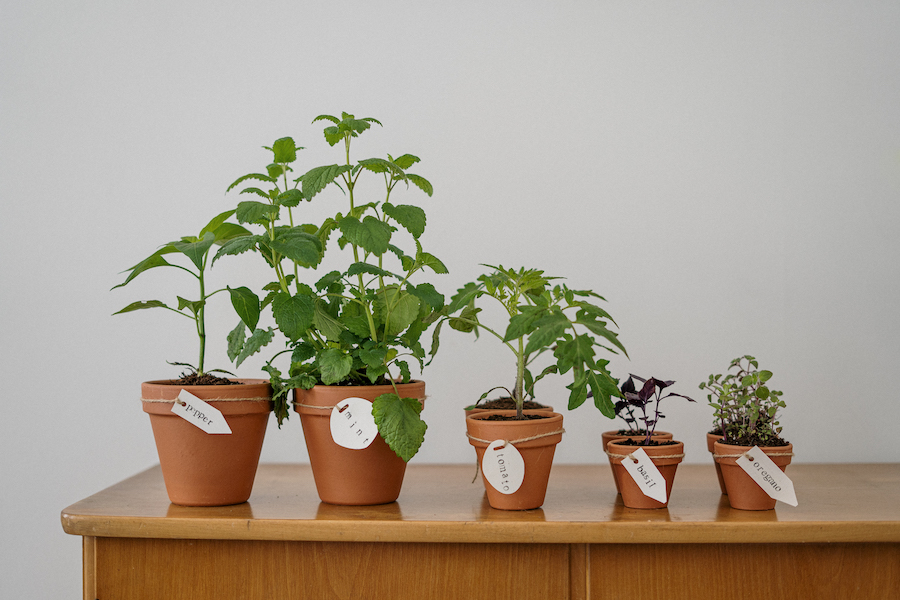Seven Edible Plants You Can Grow in Your Apartment
All you need is sun, soil, and a little space.

Photo via Pexels
I love living in the city, but there are some days when I really wish I had some green space behind my apartment. Especially in the summer, when people decide to build their raised plant beds, vegetable gardens, and fill their yard with fruits, vegetables, and herbs.
For those of us without a green space, there are actually some options when it comes to growing edible plants in your home. The next time you’re in need of a project, try growing one of these vegetables or herbs to use in your home cooked meals.
Green Onions
This is perhaps one of the easiest plants to grow in a small space. The next time you purchase green onions from the store and use them in your cooking, trim them so that about 1 inch of the white root is left. Place the trimmings in a small jar and fill it with about one inch of water, then place it on the windowsill or somewhere it will be exposed to sunlight. As the onions grow, you may need to swap out the jar to support them. Change the water every few days.
Microgreens
Microgreens are like sprouts, but have been left to grow for a little while longer—so they have similar health benefits, but more nutrition. Microgreen seeds come in a variety of different types, such as broccoli, beet, celery, lettuce, mustard, etc. To plant and grow the microgreens, you need a container that’s not too deep (though any width will work) and some soil to fill it about 3/4 of the way full. You then sprinkle the seeds over the damp soil, pressing in lightly. To create a humid environment, you can cover the tray with a lid or plastic bag. Keep the soil damp as the seeds grow and spritz with a spray bottle.
Basil
You can either buy basil seeds from a gardening center or a purchase a young basil plant (perhaps that you can plant and continue to care for from places like the grocery store. If you’re using seeds, plant the seeds in a pot filled 3/4 of the way with damp soil. Cover the plant with plastic wrap or a plastic bag and place in a sunny spot. Once the seeds have started to bud, you can remove the plastic. As the plants grow, make sure the soil remains damp.
Mint
Mint is a versatile plant that can be used in both savory and sweet recipes, and in cocktails or drinks. It’s recommended to grow mint from an already well-established plant, as it’s easier to grow than seeds. To do so, trim a sprig of mint from a mint plant, cutting the sprig about 6 inches below the bud. Put the sprig in a jar of water and let it grow until roots have formed. Plant that sprig in a small pot filled with soil and keep the soil moist, and the plant in indirect sunlight.
Kale
Kale needs about eight hours of sunlight a day, so make sure you choose a spot that receives that much light (but keep the plant out of direct sunlight). To grow the kale, you’ll need kale seeds and a growing tray. Fill the tray with soil and plant the seeds. As they grow, keep the soil moist. Once they’ve sprouted, replant them in a pot and add some fertilizer. Keep the soil moist and the plants in the sun.
Peas
To grow peas indoors, keep in mind that you will need a small trellis, or stakes for when the pea vines start to grow. Start by planting one pea seed in a four to six inch pot. Keep the soil moist and place the plant by a window, but make sure the peas don’t get too hot. As the peas begin to grow, add a stake to each pot or add a trellis so that the vines can wrap around and have support. After a couple of months, pea pods will begin to form and you can pick them when they look ready.
Rosemary
Rosemary seeds can take a long time to germinate, so like mint, you may want to start with a sprig of rosemary from a friend or family member. Once you have the sprig, place it in a jar of water and wait for roots to emerge. Once there are roots, you can move it to a pot with loose soil. The plant should be near a window, but does not need to be watered until you notice that the first inch of soil is dry.


